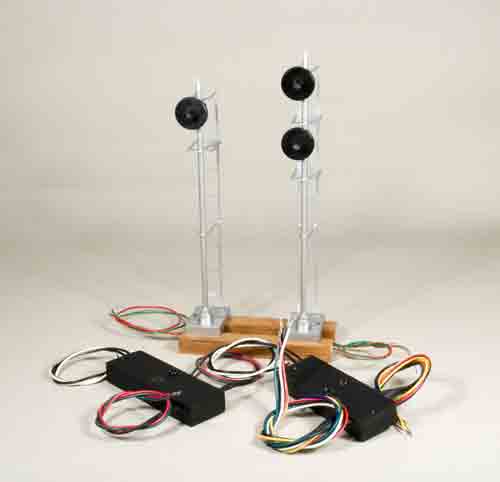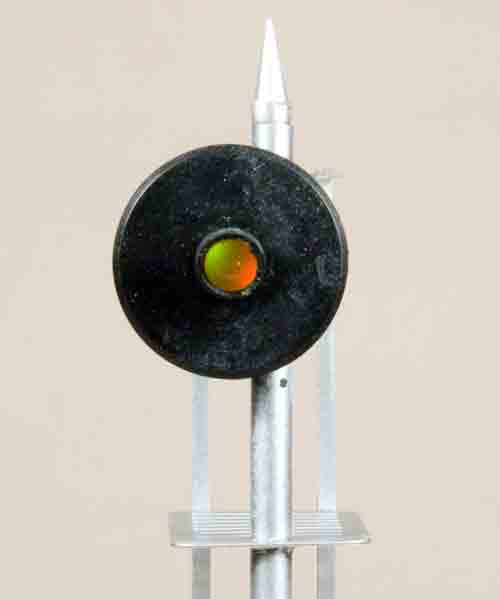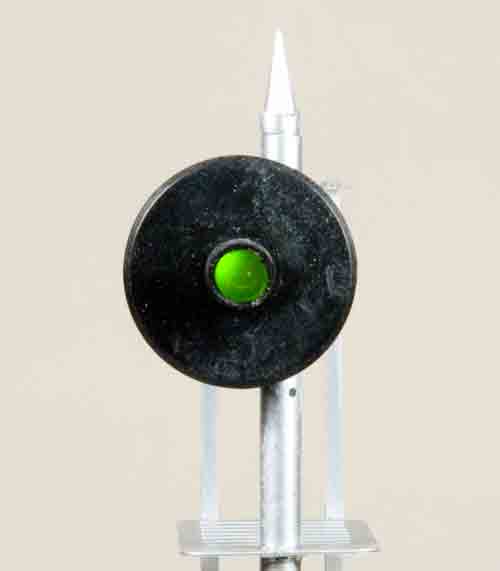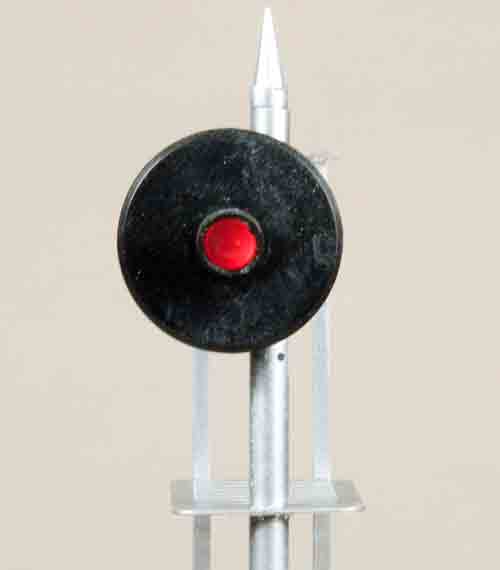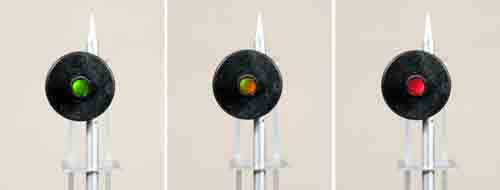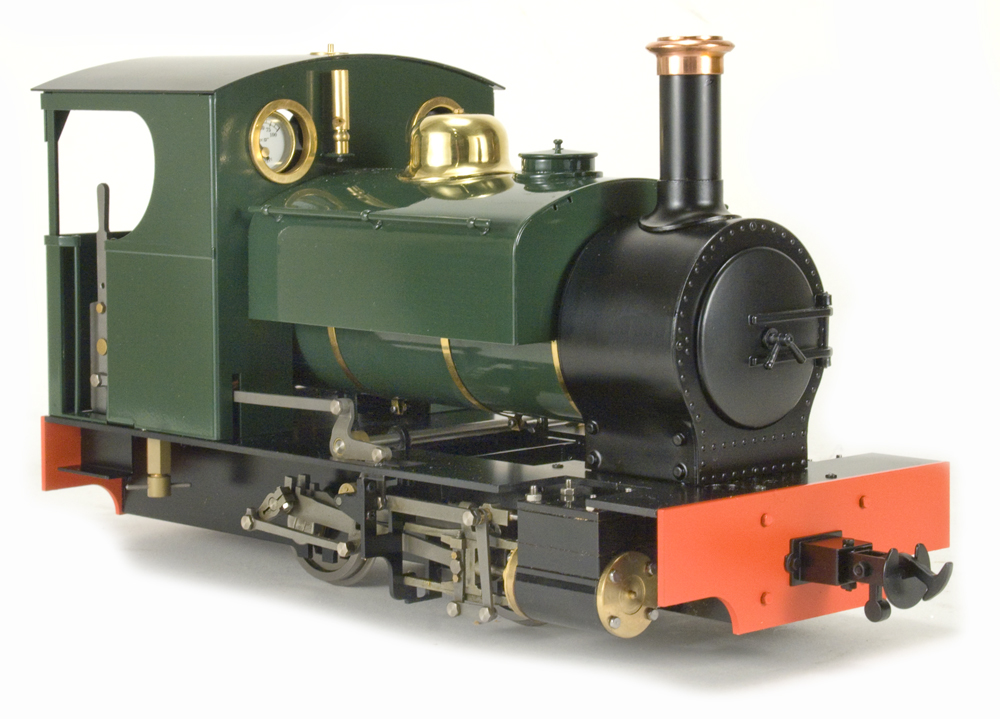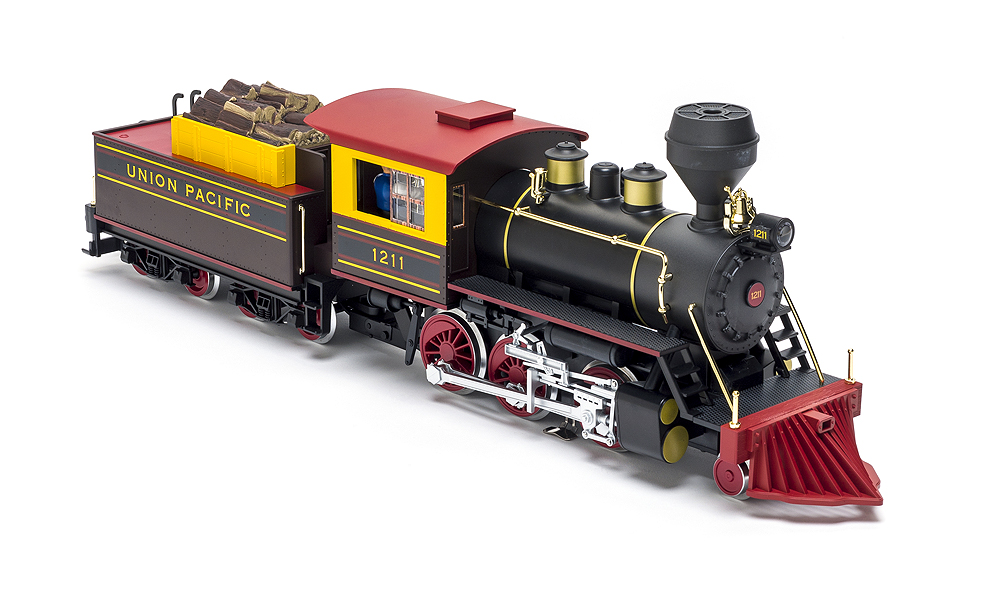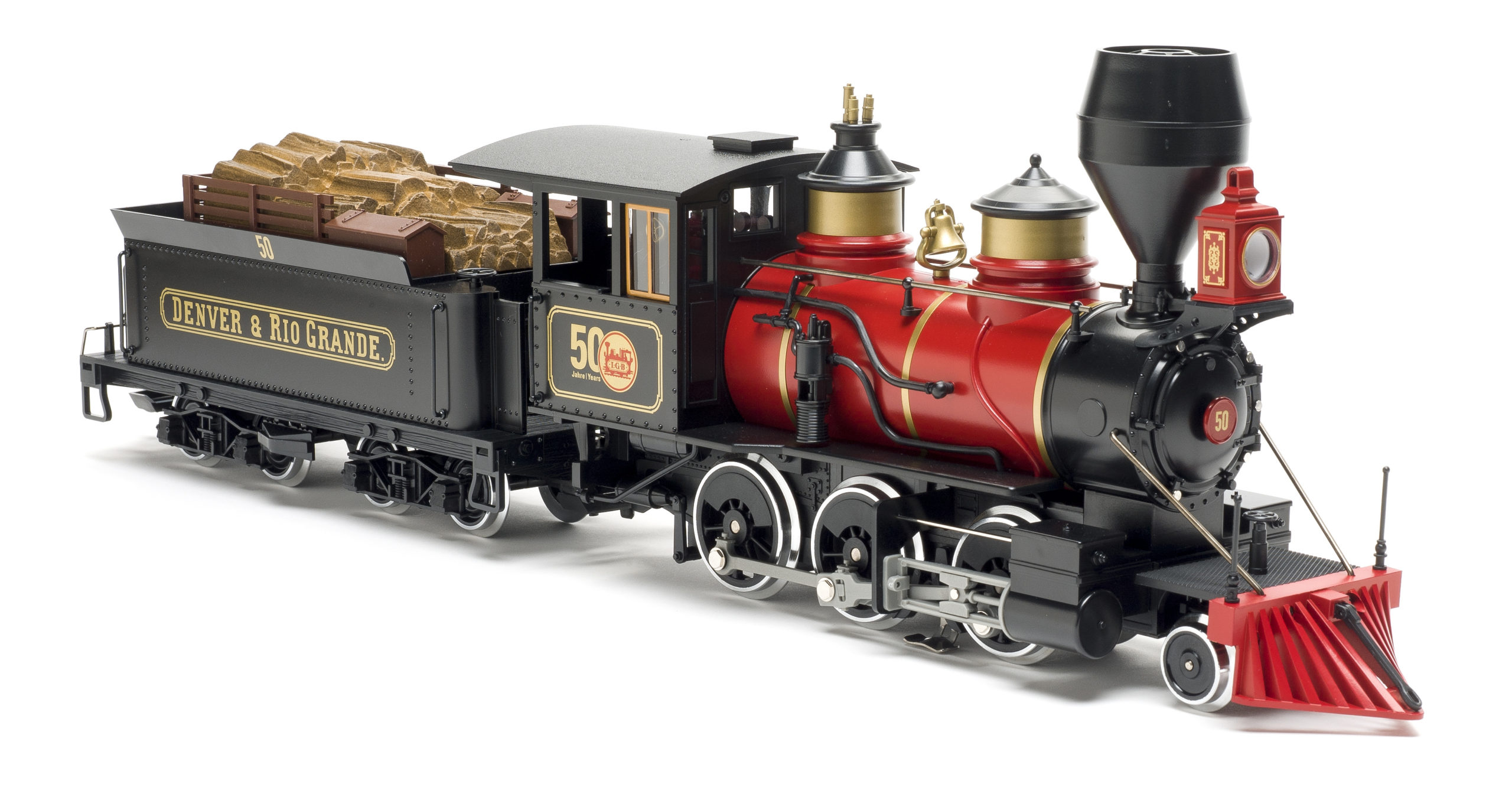Vital statistics
1:32-scale signalling system
South Bend Signal Company
2303 Creek Road
Niles MI 49120
Prices: See text
Web site: www.sbsignal.com
One- or two-target searchlight-style signals for 1:32 scale (or similar scales) plus controllers; LED lights; will show red, amber, green; signals made of styrene and brass; fully painted and ready to go; complete instructions provided; intended for indoor or outdoor use. Height: 7″ (single target); 8″ (double target). In 1:32 scale, this works out to 18’8″ and 21’4″, respectively
Pros: Good-looking signals; good instructions supplied; relatively simple wiring; reasonably robust construction
Cons: Detectors must be placed under track-may be difficult with already installed track
When correctly installed, the signals will display the proper color light when a train is in a block, or when it is leaving or has left a block. The block system is the heart of this product. You must divide your track up into blocks (individual, electrically isolated sections) for this system to work properly. Once this is done, there are a couple of ways to go. The first is using stand-alone signal drivers (#GDSDS, $34.95 ea.). These signal each block independently of the others. Or, you can use interlocking signal drivers (#GDSD, $39.95 each), which turn the entire mainline into an interlocked signalling system.
Regardless of which you use, for the first block you’ll need two drivers and for each subsequent block you’ll need one. The drivers must be placed under the track at the junctures between blocks, per the instructions, which could be problematic if your track is already installed and is hard to reach or doesn’t lend itself to excavation. There is a little window, pointing upward, on each driver that must be kept clear. Signals are then wired to the drivers. I found the instructions to be clear and comprehensive.
You’ll also need at least one signal per block (two, if the track has two-way train operation). Two different signals are offered-a single-target unit (#GS-1, $34.95) and a dual-target signal (#GS-2, $38.95). The signals have styrene bases and lamp heads, while the masts, ladders, and platforms are brass. They are prototypically painted silver and black. Two or four wire leads emerge from the bottom of each unit. The lights are two-color LEDs, which will actually show three colors.
The signal system must be powered independently of track power by a 12V DC power supply (not provided). The instructions strongly caution against using anything over 12V. Because the signalling system is independent, track-, battery-, or steam-powered trains can be used.
In operation, when a train passes over a stand-alone signal driver, the signal connected to it will turn from green to red. After the train passes, the signal turns to amber (created by red and green showing together). It will remain amber for 10 seconds, after which it returns to green. With interlocking signals, more than one signal is affected by the passing of the train and the lighting sequence is a little different.
I tested the system on my workbench and found it to work as advertised. The amber light (red and green together) was perhaps not as amber as one might wish, but it was adequate. The colors were strong in room light, but were more difficult to see in bright sun. Given that, as well as the necessary wiring, this might be a system that would be best used indoors, though it should certainly function outside. If a signaling system is something you desire for your railroad, this one is definitely worth investigating.





